Oita: Everything you need to know about Japan's onsen capital
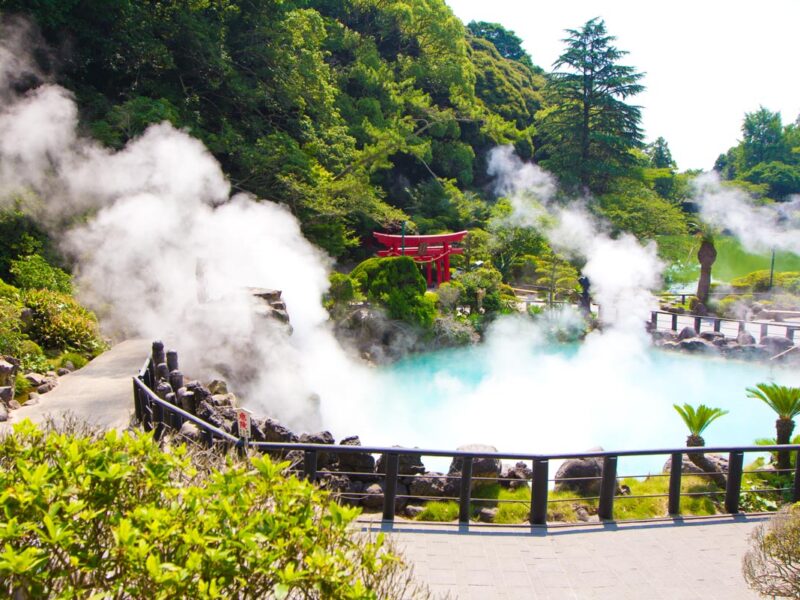
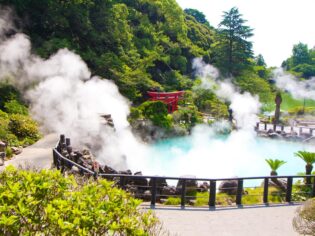
With over 5000 hot springs to choose from, Oita prefecture is the perfect place to immerse yourself in Japan’s onsen culture.
When it comes to iconic Japanese experiences, visiting a communal bathhouse is right up there with eating fresh sashimi and watching the countryside whizz past from the window of a bullet train.
Just about every settlement of any size will have a sento bathhouse using artificially heated water, but only those places harnessing natural hot springs can be called onsens (a term that applies to both the springs themselves and the bathing facilities built around them).
And no destination is more closely linked with onsens than Oita, a small prefecture on the southern island of Kyushu where more than 5000 natural hot springs have been used to treat illness and injury since the 8th century. In addition to bathing in mineral-rich hot pools, visitors can enjoy rare steam, sand and mud onsens and marvel at fantastically coloured “hell” springs that look like they belong in Yellowstone National Park.

Oita has more than 5000 natural hot springs.
In a prefecture with an abundance of riches, Beppu is ground zero. Tucked between steep mountains and the tranquil Seto Inland Sea, this small town with a population of just 120,000 claims 10 per cent of Japan’s total onsens – in total, there are 2849 springs in the area and more than 100,000 litres of hot water gushes from the ground every minute.
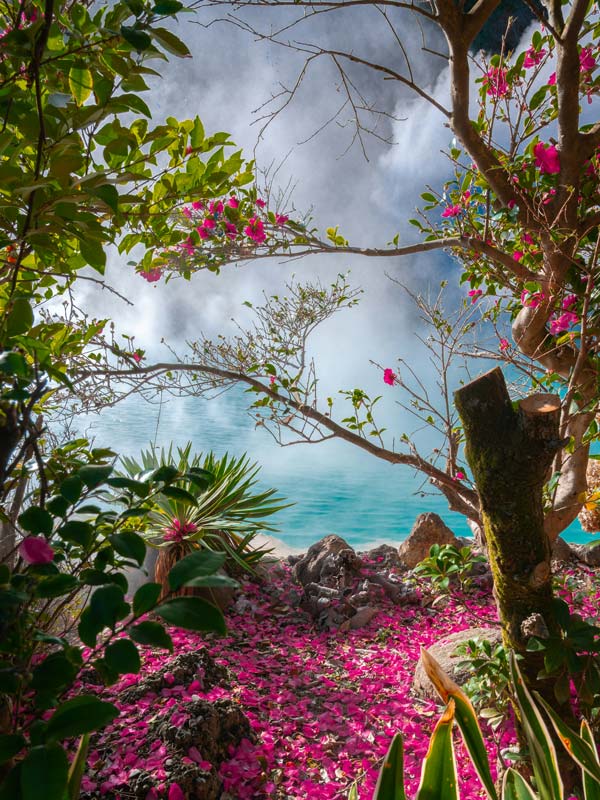
Beppu has 2849 hot springs. (Image: Samuel Berner)
Unsurprisingly, local life revolves around onsens and for many locals a daily soak is as essential as their morning coffee. Here’s everything you need to know to get the most out of your visit.
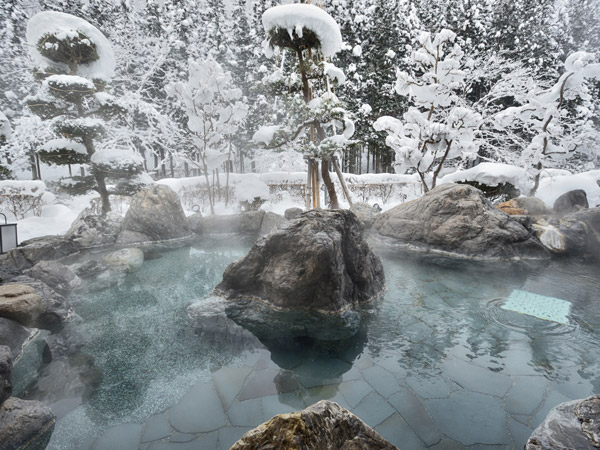
Beppu has 10 per cent of Japan’s total onsens.
Get into hot water
Traditional hot water baths make up the overwhelming majority of Oita’s onsens. Municipal bathhouses cost as little as 100 yen ($1.05) to use but tend to be quite basic; they are often little more than a bath that can fit four people and charge an additional fee for extras such as a towel or yukata robe.

Put on a yukata if you’re not comfortable being baring it all.
At the other end of the scale, elaborate hotel and resort onsens usually have multiple pools at different temperatures, indoor and outdoor areas, saunas and even private baths or restaurants. And the abundant competition means they’re considerably cheaper than in other parts of the country, usually clocking in at less than 1000 yen.
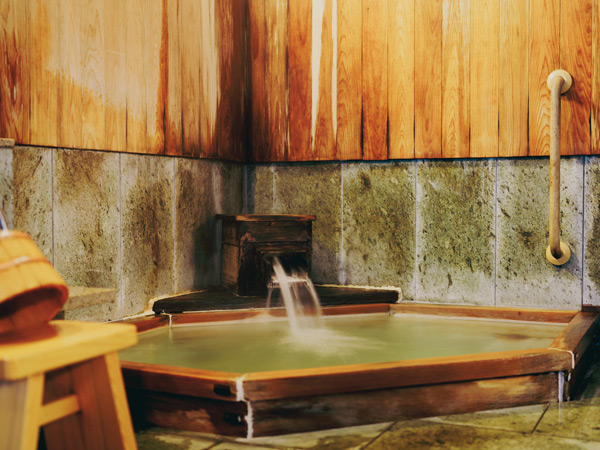
Many facilities have private onsens in case you don’t want to share with strangers.
As a rule, Oita onsens tend to be quite warm and many are close to 45 degrees. It means that most locals only stay in for five to 15 minutes, though larger complexes with pools at different temperatures allow for longer visits. The abundance of hot water also means that many facilities have private onsens in case you don’t want to share with strangers. This is a good option in ryokans and more conservative establishments that don’t allow tattoos, or for couples who want to bathe together.
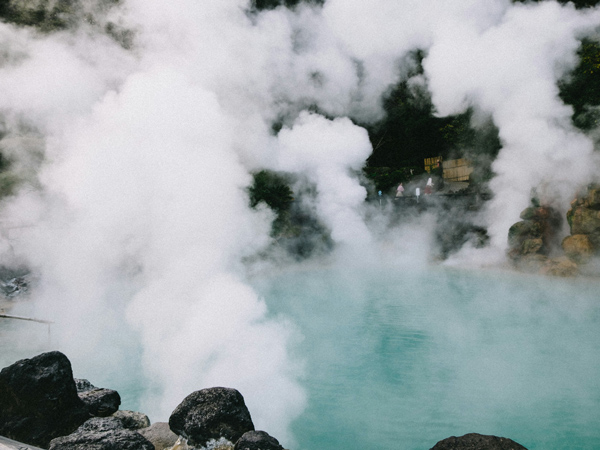
Hot springs have been used to treat illness and injury since the 8th century. (Image: Tayawee Supan)
Don’t miss
In the mountains of central Oita, Kuju Hossho Hotel has a wide range of outdoor pools including a non-mineralised spring, a large cedar tub with iron-rich waters, a sulphur spring that smooths your skin and even a takiyu pool where streams of water tumble down to provide a pressure massage. Best of all, the location means you can enjoy sublime views of the surrounding peaks while bathing.
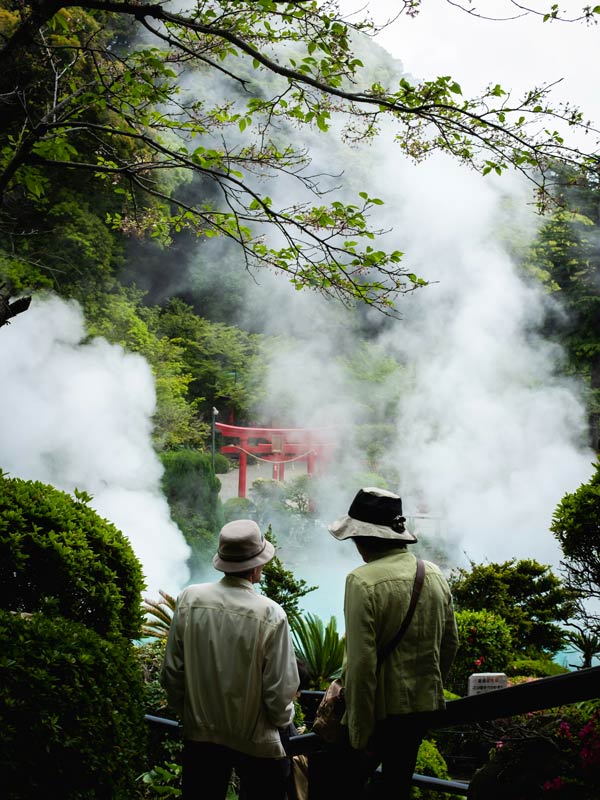
Traditional hot water baths make up the overwhelming majority of Oita’s onsens. (Image: Christian Chen)
Closer to town, the ANA InterContinental Beppu looks out over Beppu and the bay beyond from its hilltop location. In addition to large granite and cypress pools that take advantage of the magnificent views, there’s a dry sauna and reclining bath as well as a large private onsen that can be booked by the hour for up to six people.
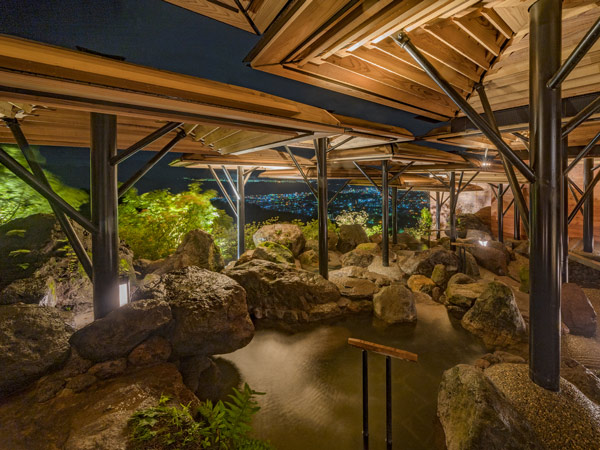
Explore the large granite and cypress pools at ANA InterContinental Beppu.
If you have your own car, you can head further up the hill to Hebinyu where you’ll find four pools of crystal-clear water next to a small stream that provides cold water so you can adjust the temperature. If you’re lucky, it’ll be just you and the birds and because they’re on public land, the pools are free to use and there are no restrictions on tattoos or mixed-gender groups.
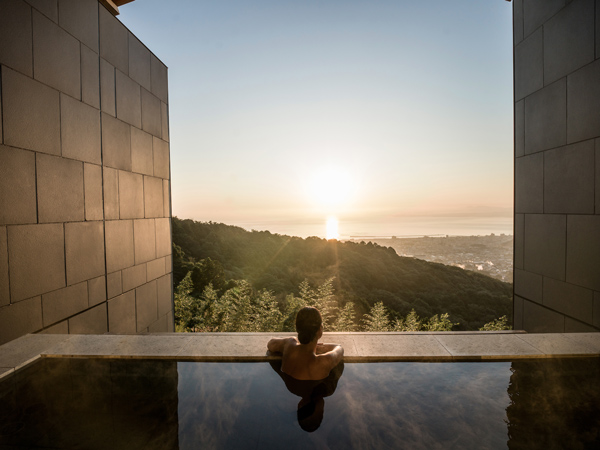
Relax in the pool while admiring magnificent views over Beppu.
Shifting sands
Another way to make use of the abundant geothermal energy is through sunayu or sand baths, which are found at several locations in Beppu.
After putting on a yukata robe, visitors lie down and allow themselves to be buried beneath piles of warm sand. The heat and pressure both help to relax the body and have long been used to relieve muscle and joint pain. And because these are generally located within larger facilities, you can shower off afterwards before enjoying a traditional onsen hot pool experience.
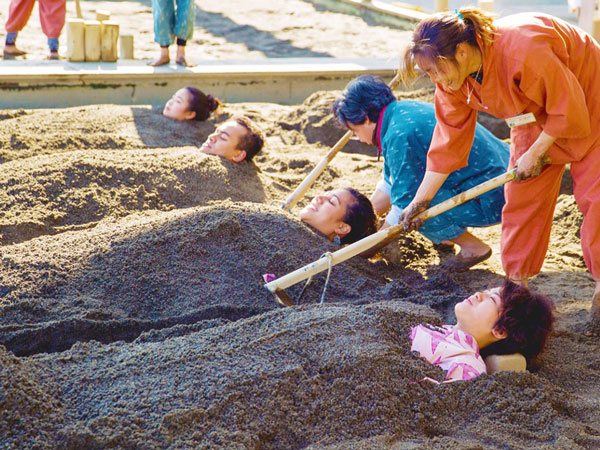
Soak in the sand baths of Beppu.
Don’t miss
The large wooden building housing Takegawara Onsen dates back to the Meiji era and the interior looks like it has barely been updated since, but it’s always busy thanks to the rooms where you can pay 1500 yen to be completely buried beneath a mound of warm black sand. It’s worth booking ahead as only eight people at a time can enjoy the experience, which takes around 40 minutes and includes 10–15 minutes beneath the sand.
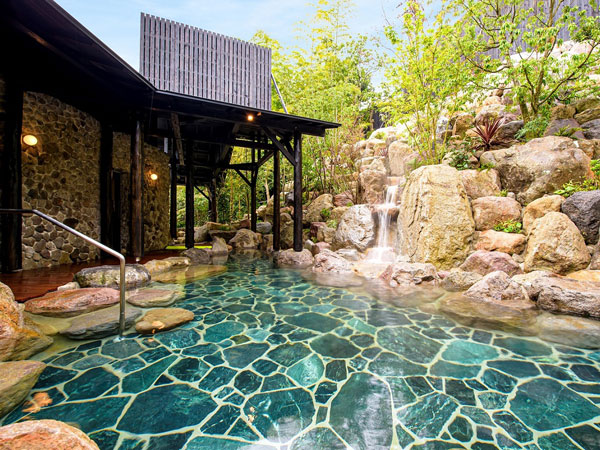
Find your zen in Hyotan Onsen.
The sunayu at Hyotan Onsen is unstaffed, so you’ll have to designate someone to bury everyone else, but because the dry sand is lighter and slightly cooler than Takegawara, it’s a good choice for those who want a less intense experience.
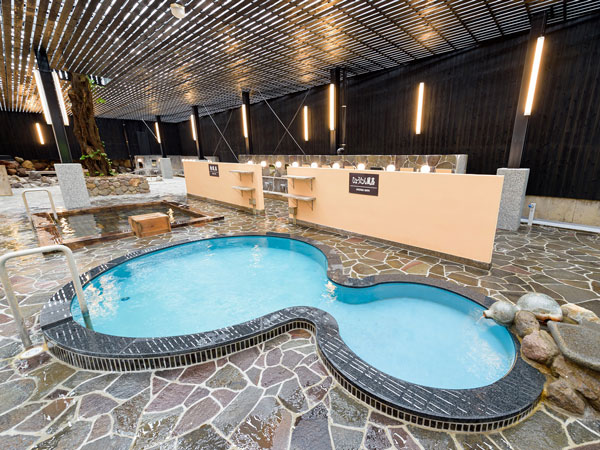
Rejuvenate in one of the pools at Hyotan Onsen.
Hyotan’s wide range of facilities also makes it one of the best places to visit in Beppu: in addition to cypress and stone pools, there are 14 private onsens (both indoor and outdoor), a mushiyu steam bath and takiyu waterfall bath that all have a tattoo-friendly policy.
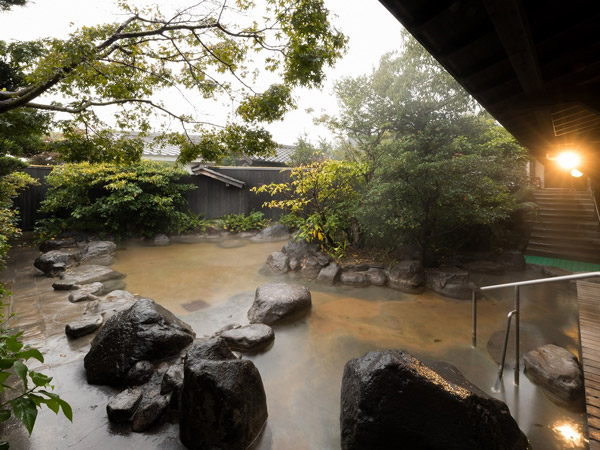
Hyotan Onsen is one of the best places to seek solitude in Beppu.
All steamed up
On a cold day, the clouds of steam billowing up from Beppu’s many onsens make the city look like an industrial hub. Some of these vents have been converted into public cooking stations and there’s even an entire cuisine known as Jigoku Mushi (literally “hell-steamed”).
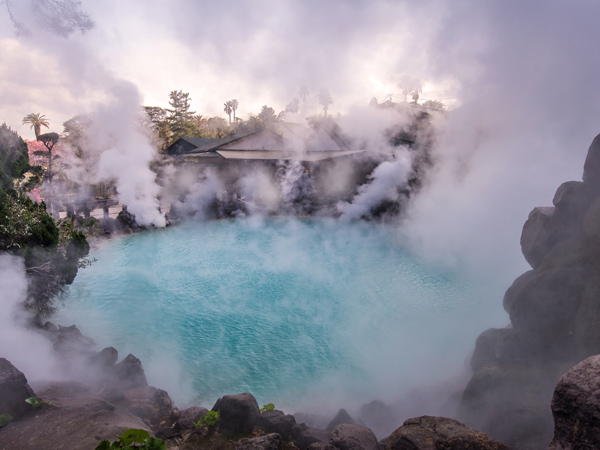
On a cold day, clouds of steam billow up from the onsens.
Several onsens also channel the hot air through vents to create sauna-like steam rooms. Unlike saunas, guests generally wear yukata robes, so they can be a great option for those who don’t want to disrobe in front of strangers.

Only places harnessing natural hot springs can be called onsens.
Don’t miss
The free foot steam baths outside Kannawa Mushiyu hint at what awaits inside. Said to have been founded by the preacher Ippen Shonin in 1276, the facility includes a low-ceilinged stone chamber with a floor covered in medicinal herbs that aid respiration and perspiration.
In truth, there’s little need to encourage sweating when the temperature hovers around 75 degrees and after eight to 10 minutes in this medieval steam room you can shower and enjoy the small onsen bath nearby.
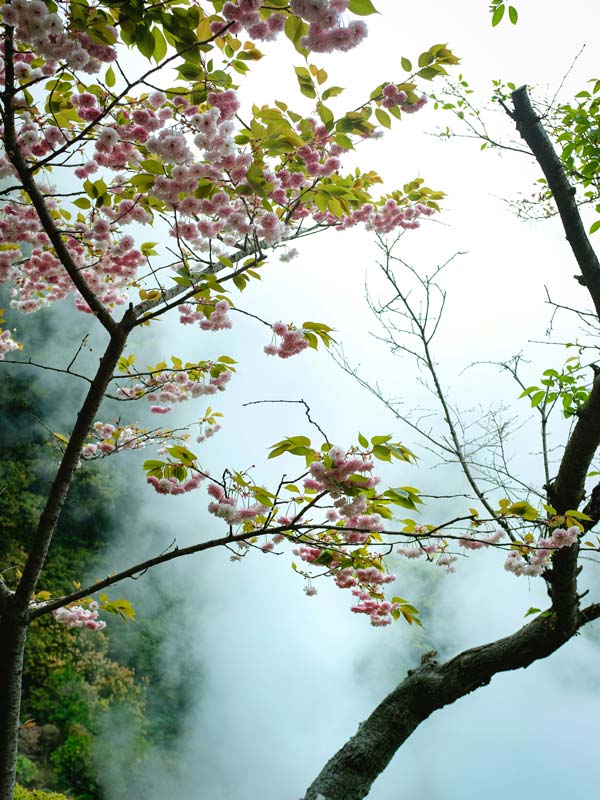
Aid respiration and perspiration. (Image: Christian Chen)
Clear as mud
The rarest of all the onsen types is also one of the least visually appealing, but doroyu mud baths make up for their appearance with extra-rich mineral content.
They occur naturally when steam vents burst into clay beds and turn them into bubbling lakes of hot grey mud, though most public facilities add water to make them easier to enter (and wash off).
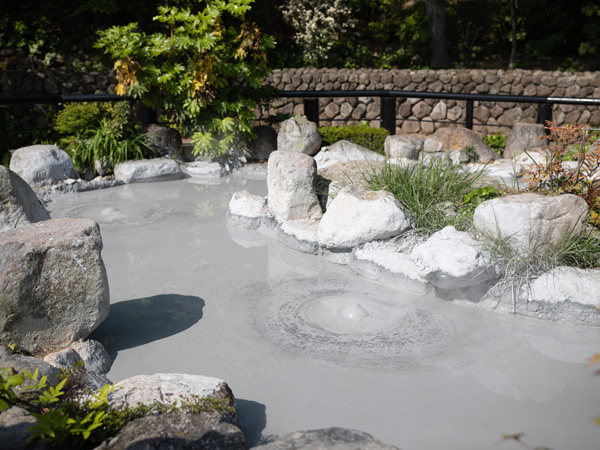
When steam vents burst into clay beds they turn them into bubbling lakes of hot grey mud.
The opaque liquid that results provides a higher degree of privacy than clear water, but many bathers stand in the open air and allow the mud to dry on their skin afterwards before washing it off.
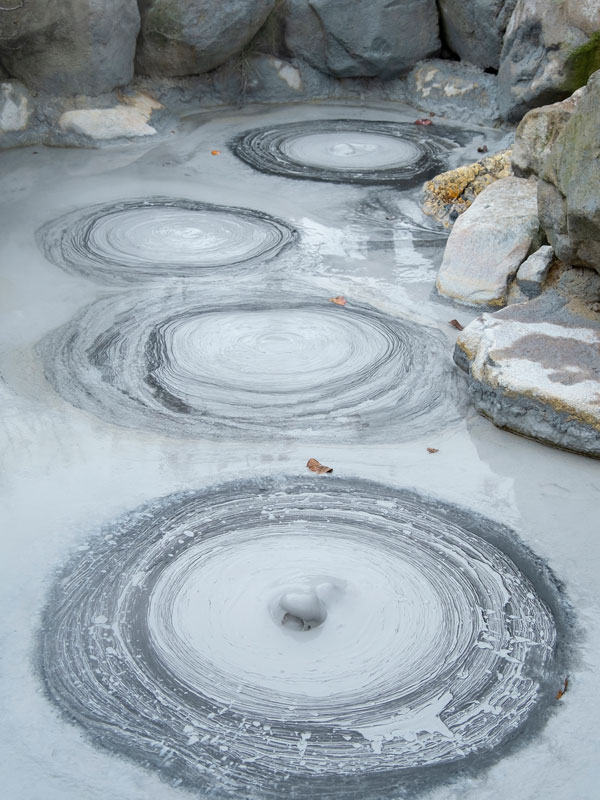
The opaque liquid that results provides a higher degree of privacy than clear water
Don’t miss
Koudei Onsen is located next to the site of a former temple that is said to have exploded in an eruption in 867. Today the site is peppered with gurgling mud volcanoes that reach 95 degrees, but the neighbouring onsen (open 8.30am – 12pm except Thursdays) includes a superheated outside bath and a specialty pool filled with a mixture of mud and water that’s cleaned on the hour and leaves the skin feeling soft and smooth afterwards.
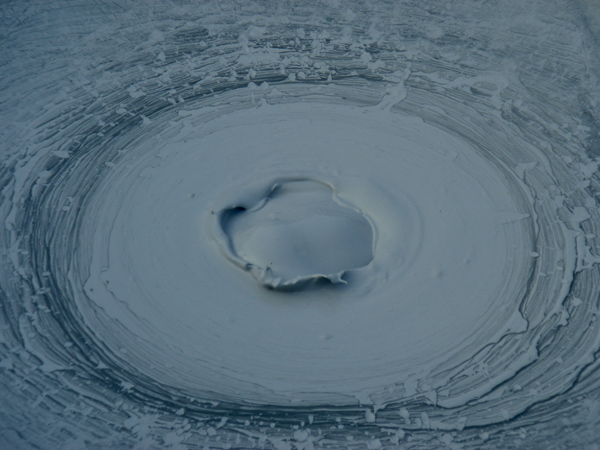
Apply a layer of warm, mineral-rich mud to your body. (Image: Jonas Gerlach)
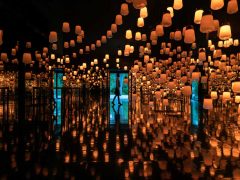
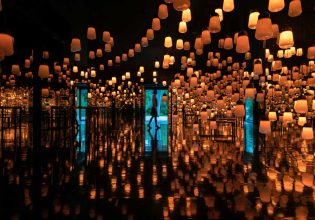

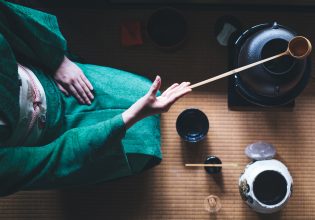
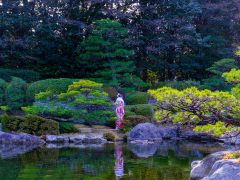
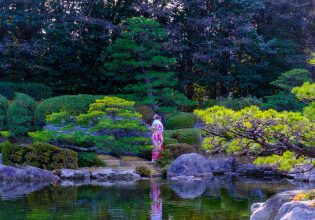
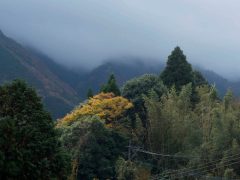

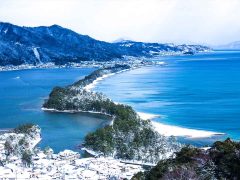

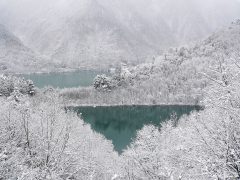


LEAVE YOUR COMMENT